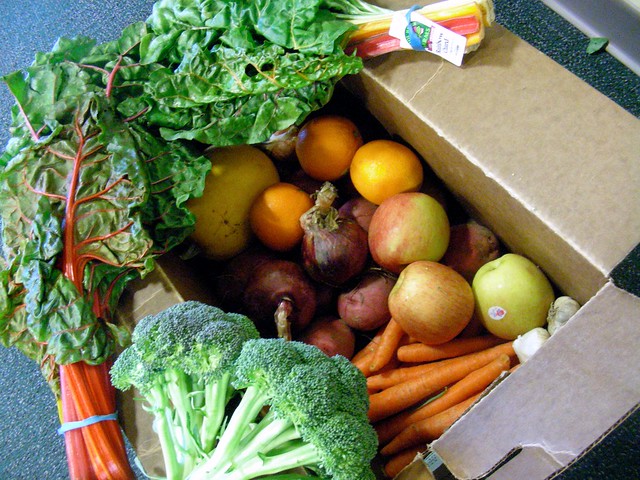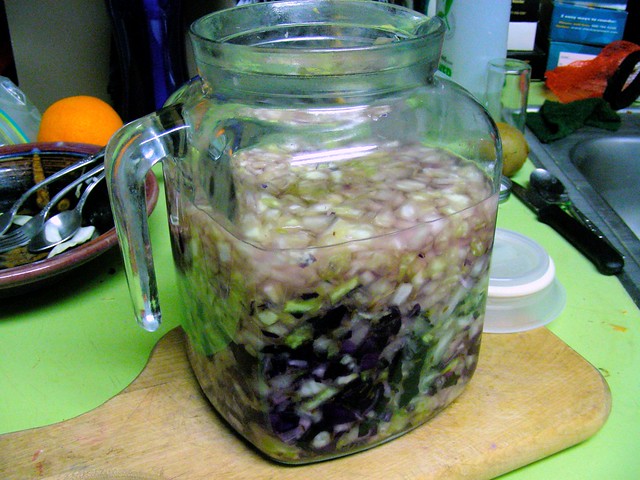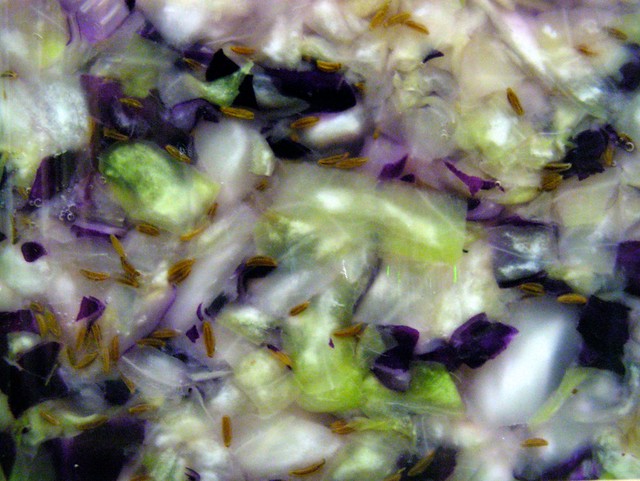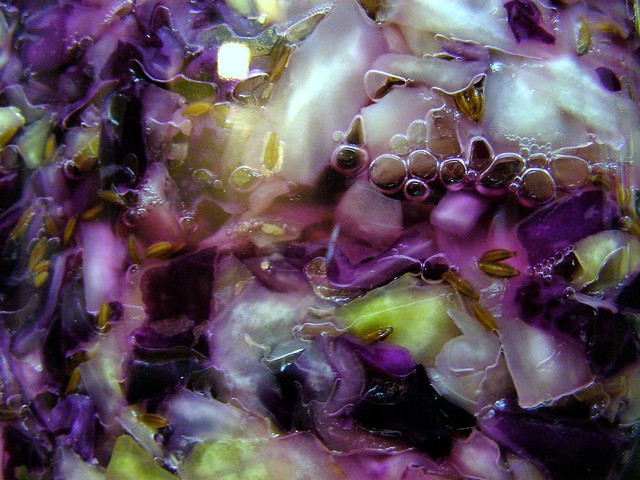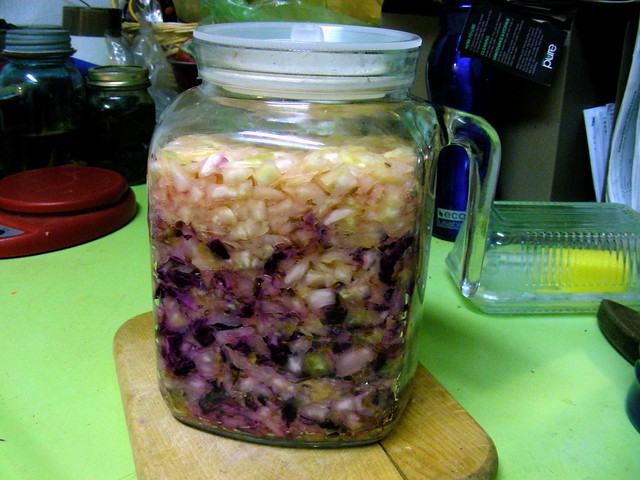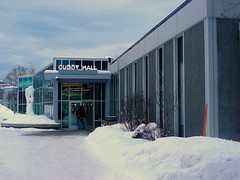
Lucy Cuddy Hall on the UAA campus, one of a number of Glacier Valley Farm CSA's dropoff locations in Anchorage
Yesterday I picked up my second order of produce from Glacier Valley Farm CSA. CSA, again, stands for community supported agriculture; I wrote a long post about it when I picked up my first produce order a couple of weeks ago. I didn’t take as many photos of it this time, but up there you can see it was a pretty good sampling of fresh yummy produce.
This week’s goodies included:
From Alaska’s Glacier Valley Farm, VanderWeele Farm:
- Alaska-grown onions
- Alaskan-grown potatoes, a whole bunch of ’em
- A big pile of Alaska-grown carrots, which are the best kind of carrots I’ve ever eaten.
From Outside (all certified organic)
- 3 Fancy Fuji apples
- 3 large navel oranges
- 2 bunches of Rainbow chard. I think one of these was supposed to be romaine lettuce, but that’s okay, I like chard well enough I won’t have problems eating it all.
- sunchokes. I don’t have a clue what to do with these, but I’m sure Google will have an answer.
- broccoli
And also:
- a really big squash. I don’t know whether it came from Alaska or from the Lower 48.
I’ve never liked squash, so I took mine over to my friend Sylvia, who really loves it. I like everything else. Had one of those oranges in my lunch today.
GVFCSA includes stuff from the Lower 48 during the wintertime because, hey, it’s winter in Alaska so a lot of that stuff is out of season up here. The Alaska-grown stuff they include in their produce boxes in the wintertime are storage veggies. Thus, GVFCSA can claim to be the only year-round CSA in Alaska. But there are some other really good CSAs in the Anchorage/Mat-Su area, too, including Arctic Organics, which is the oldest CSA in Alaska & serves about 150 families with its CSA program; and Spring Creek Farm, which belongs to Alaska Pacific University & began a CSA program in 2007. They also have an Environmental Learning Center. Like Glacier Valley Farm, these two farms are located in the Palmer area of the Mat-Su Valley.
If you live in another part of Alaska, you might be able to find another CSA through the Community Supported Agriculture page on the Last Frontier Locavores website (though I don’t know how up-to-date it is). There’s a lot of them in the Fairbanks area! Also check out the website of the Alaska Community Agriculture Association. This is an organization of small Alaska farms which grow food crops for direct sale to the public, whose members are — per their mission statement — “committed to promoting, supporting, and working towards sustainable and regional local food systems. We want to encourage agricultural practices that benefit our environment, our communities, and our customers.” They’ve got a good page of links to CSAs, farmers’ markets, & other community agriculture resources.
My first order of produce from Glacier Valley Farm CSA included a humongous Alaska-grown cabbage. Somehow I didn’t get a photo of it when it was still whole, but take my word for it: it was big & beautiful.
I used it last week to make sauerkraut. I also had some red cabbage that I’d bought at the Natural Pantry, my usual grocery store.
Making sauerkraut is easy, but it can take awhile. Took a long time to chop all that cabbage up, mixed in a bit of salt & caraway seed, then kinda pound it down to bring out the brine. (For lack of anything better, I used my metal Kaladi Brothers car cup: worked great.)
Here’s my sauerkraut the night I made it.
There’s no water added other than about four or five tablespoons of lactic-acid rich “water” from some fruit kimchi my ex-partner Ptery (then named Rozz) made three years ago, that’s still in the fridge (& still good!). All the rest of the fluid is simply the brine from the cabbage itself, which I guess the salt helps to draw out. That kimchi fluid had the stuff to begin the process of fermentation that makes cabbage, salt, & good guy bacteria into really tasty sauerkraut.
I took a bunch of other pictures of the sauerkraut that night because macros of it made some really nice abstract sauerkraut art.
Here’s the same batch of sauerkraut two days later. See all those bubbles? Fermenting nicely.
Fermentation had also caused the cabbage to rise up in the jar (an Italian-made jar with a lid that provides a hermetic seal).
You might also notice how much more purple the lower region of the sauerkraut is than the upper region. That’s because when I first cut up the cabbage, I didn’t think all of it would fit, so I kept about a third of the light green Alaska-grown cabbage out. Then looked like it’d fit after all, so I put in the rest of the light cabbage.
I first tried out some of my cabbage last Friday while I was watching “Caprica” (hence my Daily Tweets post that day, “Caprica w/ sauerkraut”). That was about three days after it was made, & it was pretty good! But sauerkraut is even better after you’ve let it age a bit. Here’s what it looked like tonight, when I had a small bowlful with my dinner. See how the dark purple pigments from the “red” cabbage have mixed all up to make my sauerkraut pink?
Yummy good. And good for you too. Sauerkraut has tons of Vitamin C, & the fermentation process means there’s also lots of good guy bacteria to keep your internal flora all nice & happy.
Please enjoy my Sauerkraut Slide Show:

